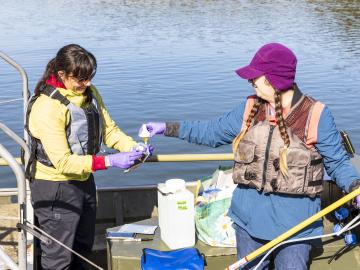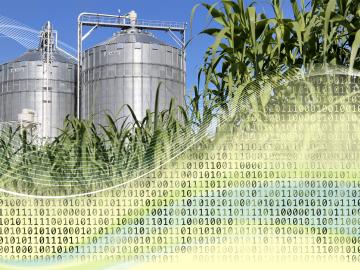
Filter News
Area of Research
- Advanced Manufacturing (1)
- Biological Systems (1)
- Biology and Environment (20)
- Computer Science (2)
- Electricity and Smart Grid (1)
- Energy Science (23)
- Functional Materials for Energy (1)
- Fusion and Fission (2)
- Isotopes (1)
- Materials (17)
- Materials for Computing (1)
- National Security (12)
- Neutron Science (5)
- Quantum information Science (2)
- Supercomputing (17)
News Topics
- (-) Bioenergy (29)
- (-) Cybersecurity (12)
- (-) Exascale Computing (10)
- (-) Grid (18)
- (-) Isotopes (5)
- (-) Physics (16)
- 3-D Printing/Advanced Manufacturing (27)
- Advanced Reactors (11)
- Artificial Intelligence (26)
- Big Data (16)
- Biology (28)
- Biomedical (11)
- Biotechnology (4)
- Buildings (16)
- Chemical Sciences (15)
- Clean Water (10)
- Composites (5)
- Computer Science (55)
- Coronavirus (9)
- Critical Materials (5)
- Element Discovery (1)
- Energy Storage (33)
- Environment (55)
- Fossil Energy (1)
- Frontier (12)
- Fusion (13)
- High-Performance Computing (16)
- Hydropower (8)
- Irradiation (1)
- ITER (2)
- Machine Learning (15)
- Materials (37)
- Materials Science (37)
- Mercury (2)
- Microscopy (18)
- Molten Salt (1)
- Nanotechnology (15)
- National Security (17)
- Neutron Science (34)
- Nuclear Energy (28)
- Partnerships (8)
- Polymers (7)
- Quantum Computing (7)
- Quantum Science (19)
- Security (6)
- Simulation (6)
- Space Exploration (8)
- Summit (16)
- Transportation (22)
Media Contacts

ORNL and the Tennessee Valley Authority, or TVA, are joining forces to advance decarbonization technologies from discovery through deployment through a new memorandum of understanding, or MOU.

A study led by researchers at ORNL used the nation’s fastest supercomputer to close in on the answer to a central question of modern physics that could help conduct development of the next generation of energy technologies.

Researchers at Oak Ridge National Laboratory are using a novel approach in determining environmental impacts to aquatic species near hydropower facilities, potentially leading to smarter facility designs that can support electrical grid reliability.

Three ORNL scientists have been elected fellows of the American Association for the Advancement of Science, or AAAS, the world’s largest general scientific society and publisher of the Science family of journals.

A new version of the Energy Exascale Earth System Model, or E3SM, is two times faster than an earlier version released in 2018.

A research team from Oak Ridge National Laboratory has identified and improved the usability of data that can help accelerate innovation for the growing bioeconomy.

For nearly three decades, scientists and engineers across the globe have worked on the Square Kilometre Array (SKA), a project focused on designing and building the world’s largest radio telescope. Although the SKA will collect enormous amounts of precise astronomical data in record time, scientific breakthroughs will only be possible with systems able to efficiently process that data.
Ancient Greeks imagined that everything in the natural world came from their goddess Physis; her name is the source of the word physics.

Illustration of the optimized zeolite catalyst, or NbAlS-1, which enables a highly efficient chemical reaction to create butene, a renewable source of energy, without expending high amounts of energy for the conversion. Credit: Jill Hemman, Oak Ridge National Laboratory/U.S. Dept. of Energy

A technology developed at the ORNL and scaled up by Vertimass LLC to convert ethanol into fuels suitable for aviation, shipping and other heavy-duty applications can be price-competitive with conventional fuels


